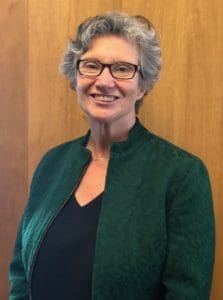By Linda Jackson
AAI Program Director
Christmas this year was different; not one of our daughters came home. I get it — they’re adults with their own lives and roots forming thousands of miles away. (Don’t get me started on the lack of affordable housing for the young people who grew up in Marin!) After decades of having a home filled with the energy and laughter of a family, it is a transition to being just the two of us again. We had to figure out, anew, the best way to enjoy the lights, the message of the power of miracles, and the gatherings around us.
This toe-in-the-water experience of no longer having family close by is perhaps why I found the recent AARP article “Is There a Medical Cure for Loneliness?” a compelling read. The authors covers recent research about loneliness, the science of contributing factors, and the cellular reinforcing reaction that might be relieved and reversed with medication to alleviate inflammation.
Stephanie Cacioppo ends the article with this definition: “Loneliness is the discrepancy between what you want from your relationships and what you actually have.”
Thanks to recent research for the Age-Friendly and Area Agency on Aging plans, we have some facts about being older and alone in Marin:
- 41 percent of people over 75 live alone.
- A third of people 60 to 74 are living alone.
- Low-income adults are twice as likely to live alone.
- Limited mobility exacerbates loneliness.
- People (mostly male) age 40 to 69 accounted for 57 percent of deaths by suicide in Marin between 2013 and 2018, yet they make up only 45 percent of the county’s population.
The PG&E power shutdown revealed the extent of people living alone in Marin. The reasons for being alone include the loss of partners, friends, and family members and/or the loss of hearing, sight, and mobility.
Being alone isn’t the challenge. The challenge is the resulting loneliness if one doesn’t have the relationships one wants. Without the right kind of housing (assisted living, memory care, affordable independent living), older people can’t access new homes with a supportive community. Without affordable housing, family members can’t live here close to parents.
Surveys tell us that most older people prefer to continue living in their homes. Yet research tells us the potential negative health effects of social isolation often found in the suburbs: chronic loneliness, cognitive decline, depression and mental illness, and heart disease.
There are solutions found around the world. In France, people can pay postal workers to visit with distant relatives. In northern Europe, co-housing enables older people to live in intergenerational communities. Denmark revamped a myriad of transit systems to provide better mobility services for people with disabilities and seniors. In California, new laws make it easier than ever to build an accessory dwelling unit so that homeowners can have a family member, companion, or caregiver close-by. And across the county, weekly meals at community centers provide a chance for people to meet up and enjoy food and conversation together.
The good news for 2020 is that you will have new funding opportunities to help end loneliness in Marin. This month, Marin County Parks staff invite inquiries about small grants to help older people get out for hikes and other excursions. Later this year, Marin Mental Health Services Act staff will issue requests for proposals for projects to implement its new three-year plan, due to be presented to the Board of Supervisors in the next few months. And Marin’s Aging & Adult Services will release requests for proposals in late spring to implement the new AAA Plan.
New funding presents the chance for innovations to take root throughout Marin. Start thinking about what your organization can do to bring people together. Let’s maximize the outreach to older homeowners about wildfire safety to share tools and tips about successful aging at home. What ideas do you have? Read November’s article about collaborations to think about how to leverage your organization’s skills with others. Meet with potential partners, think how your organization or group can make a difference, and submit a proposal!
So, how did I enjoy the holidays this year? We had a lovely night out for dinner and music with our goddaughter and her husband. We went to San Francisco for Christmas Eve to see the lights and ice skaters. We started some new traditions with a down-sized Christmas tree for our down-sized apartment in downtown San Rafael.
Let’s do whatever we can to build the connections and tools so nobody is alone and lonely the next time there is a holiday, or a storm, fire, heat wave, or flood ~


